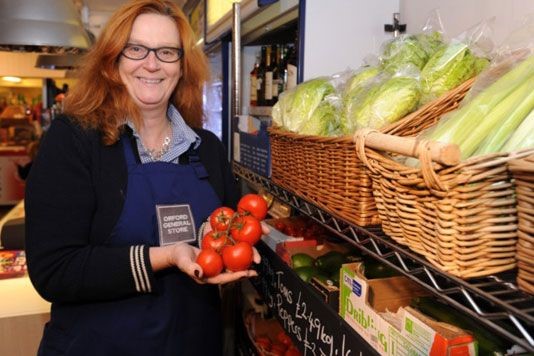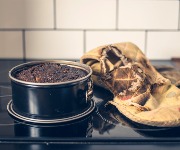The best village shop in the UK

A local shop in Suffolk has been crowned Best Village Shop in the UK. Andrew Webb went to find out what makes it such a success.
The townsfolk of Orford, Suffolk are a lucky old bunch. As well as two pubs, a restaurant, two smokeries, a butchers, and an awarding-winning bakery, its village shop has just scooped ‘Best Village Shop in Britain’.
Orford General Store beat off stiff competition from over 4,000 other shops, and was described as “a shining example of what can be achieved with application, endeavour and not a little business acumen” by the judges.
 Owner Penny Teale (pictured above) regularly price checks against Waitrose (who in turn price check against Tesco) and puts the results on her website. On fruit and veg she beats them hands down, but loses a little on bulk items like tins of beans and Coke. “It’s a draw, but when you factor in the petrol of the 12-mile trip to the nearest supermarket, plus our personal customer service, I think we win,” she tells me as we tour the shop.
Owner Penny Teale (pictured above) regularly price checks against Waitrose (who in turn price check against Tesco) and puts the results on her website. On fruit and veg she beats them hands down, but loses a little on bulk items like tins of beans and Coke. “It’s a draw, but when you factor in the petrol of the 12-mile trip to the nearest supermarket, plus our personal customer service, I think we win,” she tells me as we tour the shop.
As well as the in-store cafe, there’s also a deli which stocks ham that they make on site and a range of cheeses made by Hamish Johnston in nearby Framlingham. “All our pies are made in the village by a farmer’s daughter who has her own business,” Penny says.
Ingredients
What’s great about Penny’s shop is that she caters for everyone, no matter what their budget. So while tourists like me might want to splash out on locally smoked bacon, people from the nearby community can choose a cheaper brand like Wall's. "Too many village shops sell what they want to sell, not what customers might need. You can’t run a business like this selling just artisan chutneys; you need jammy dodgers, oven chips and washing powder too.”
Penny’s top five tips
If you’ve got a village shop in your community that’s under threat, turn it around by following Penny’s tips.
1. Make sure you have the right range for your customer. That means you need to offer a broad range of things people actually need regularly.
2. Be aware of pricing, so work carefully with your suppliers.
3. Get your layout right. Penny’s put much higher shelves in, so she can stock more. She’s also put milk at the back of the shop, which pulls people through. These are tricks that the supermarkets use.
4. Support the local economy as much as you can. Know where your produce has come from. So if it’s a butcher, work with him or her.
5. Finally you need great staff. "We offer a dry cleaning collection, we’ll deliver... and if people are coming for the weekend we’ll have their order ready and can deliver it to their holiday cottage."
Lambing time
For all the ‘Up From Londonites’ like me, this is still a rural village shop. A farmer comes in: "Morning Peter, how’s the lambing going?” “Oooh not so good," he replies. "I had a set of twins at 5am. I’ve got another one that’s stuck. That’ll be a vet job, we’ll probably lose the lamb, but try and save the mum.” You don't get an exchange like that in Islington.
Finally we move outside to look at the fresh vegetables. "This was my big thing when I bought the business," said Penny. "To put proper fruit and veg in - it’s what stops you going to the supermarket. There are the usual suspects [carrots, potatoes, cabbages], all very much locally sourced, and then there’s some more unusual things, like fresh garlic, pak choi and artichokes. Village shops don’t sell artichokes, but that’s our third box in two weeks!”
A day in the life of a Suffolk bakery
Most Recent
Comments
Be the first to comment
Do you want to comment on this article? You need to be signed in for this feature








